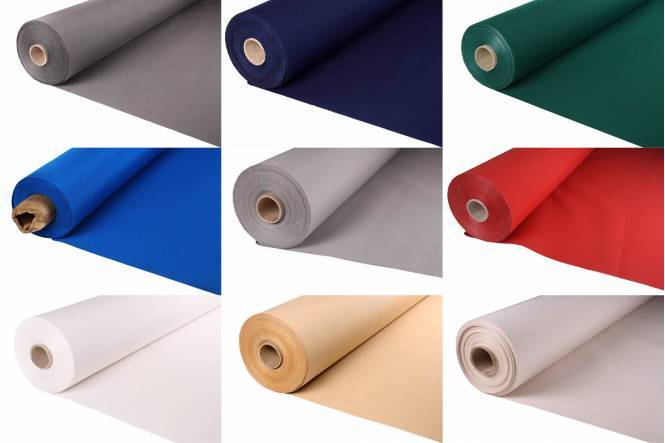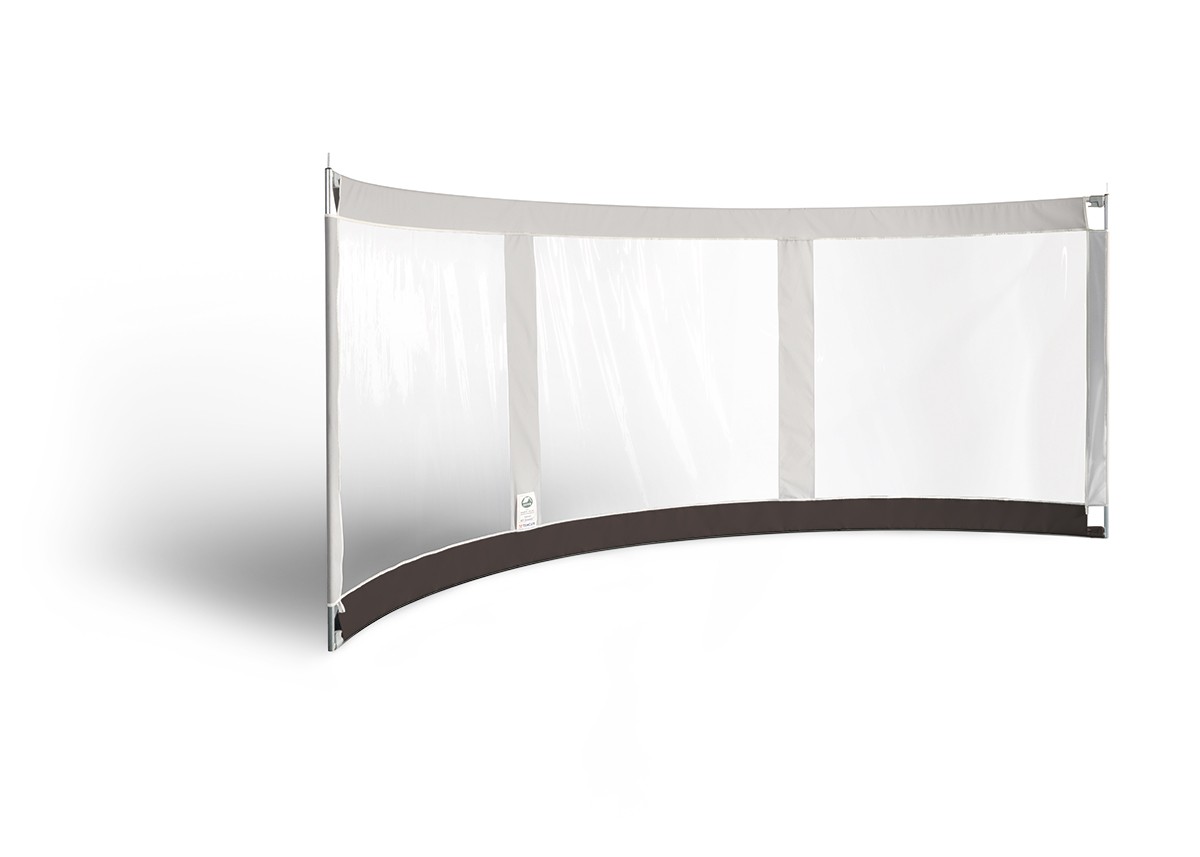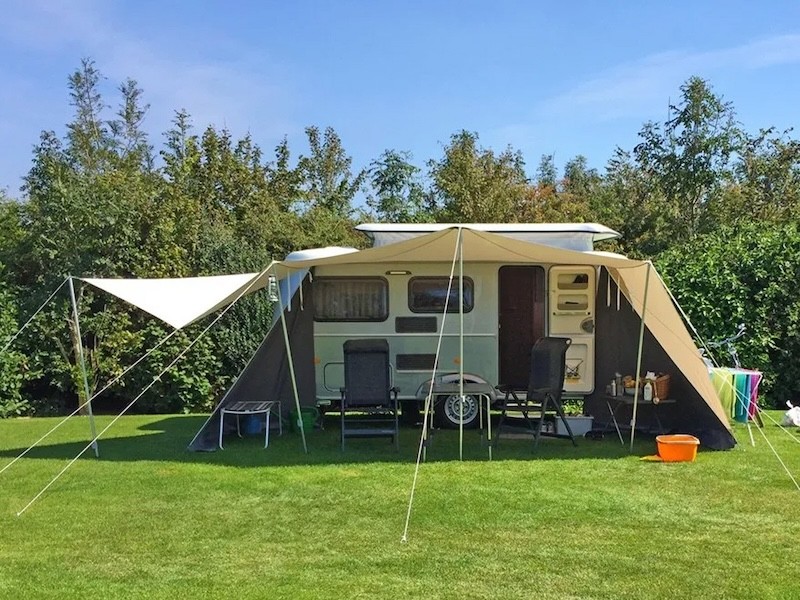
A customised cotton caravan awning for an Eriba Touring caravan
An cotton awning for an Eriba Touring caravan - fully customised and versatile in terms of set-up
An Eriba Touring has an exceptional body: traditional model, which has been around for over 60 years. A Touring has a stylish retro design, with this caravan still offering plenty of space inside. And outside, the caravan has an aerodynamic front. This makes the owner stand out to other caravan owners. Many owners therefore want to make a difference with the caravan awning for their Touring; preferably completely according to their wishes.
This is made possible by AtomaTent from Uden, which has made a big name for itself with this. This company was taken over in January 2024 by Esvo Tenten*, the Netherlands' largest tent workshop and known in Europe for their cotton pyramid tents.
For references around AtomaTent awnings: feel free to surf around the Internet and read what owners' experiences about them say and how proud they are. There is no better information!
A custom-made cotton caravan awning for an Eriba Touring and still rock solid?
Esvo* manufactures an awning for every type of Eriba Touring, entirely according to your wishes.
You can choose between a trendy retro-look with heavy cotton (which made AtomaTent famous) or else with the mix cotton/polyester awning canvas. As Esvo is also market leader in tent cloth, there is a choice of 5 tent cloth types and dozens of colours, which you can put together yourself. When it comes to putting together the caravan awning, you are in charge of:
- Zip-on side panels
- Zip-off front wall
- Window in front wall
- Solar/rain points
- Extra aluminium pole
- Windbreak
- Netting or screen fabric/shade fabric
- And whatever else you wish.
The possibilities are always considered. In addition to the best materials and the versatility of this caravan awning, we naturally always provide advice on the many set-up options. For an Eriba caravan, click here for general ideas.
*Why buy a Touring caravan awning from Esvo Tents? Buy with certainty
- Holland's largest tent atelier. Quality since 1922. Court supplier, by royal appointment
- Owner of AtomaTent. Holder of all technical drawings
- Specialised in caravan awnings made from the best materials
- Own tent pole factory
- Online market leader in tent cloth and outdoor fabrics
- Highly rated company, 13,000 customer reviews with 4.75 stars out of 5
- Affiliated to Europe's highest consumer trustmark Trusted Shops, with purchase protection up to € 20,000 Click here.
A perfectly fitting caravan awning for every Eriba Touring even more than the 530
The Eriba Touring 530 is by far the best-selling and seen model, but there are also the varieties: Touring Troll 430, 535, 540, 542, 550, 560, 630 and 642, and so are the Eriba Triton and the Pan. For all these caravan models, an awning can be made to measure and to your requirements: perfectly fitting and made with a quality that people are used to from both Atomatent and Esvo: relatively light in weight, yet made from the highest quality materials, quick to erect and a wind-resistant construction.
A customised caravan awning for a Biod caravan or any other brand? And how to obtain advice?
Because of Esvo's specialism, a ‘customised caravan awning’ is also possible for caravan brands: Biod, KIP, Caravelair, Knaus and other aerodynamic caravan bodies. For an Eriba caravan, click here for general ideas. Because buying such an awning can sometimes get pricey, it is wise to make an appointment with the experts in Volendam, to discuss all options. After all: this will be your own distinctive Eriba awning!
That's why you are always welcome. Click here to make contact.

Which tent pegs are suitable for hard ground or rocky soil?
Otherwise see this page in Dutch and use our translate tool at the top of our page.
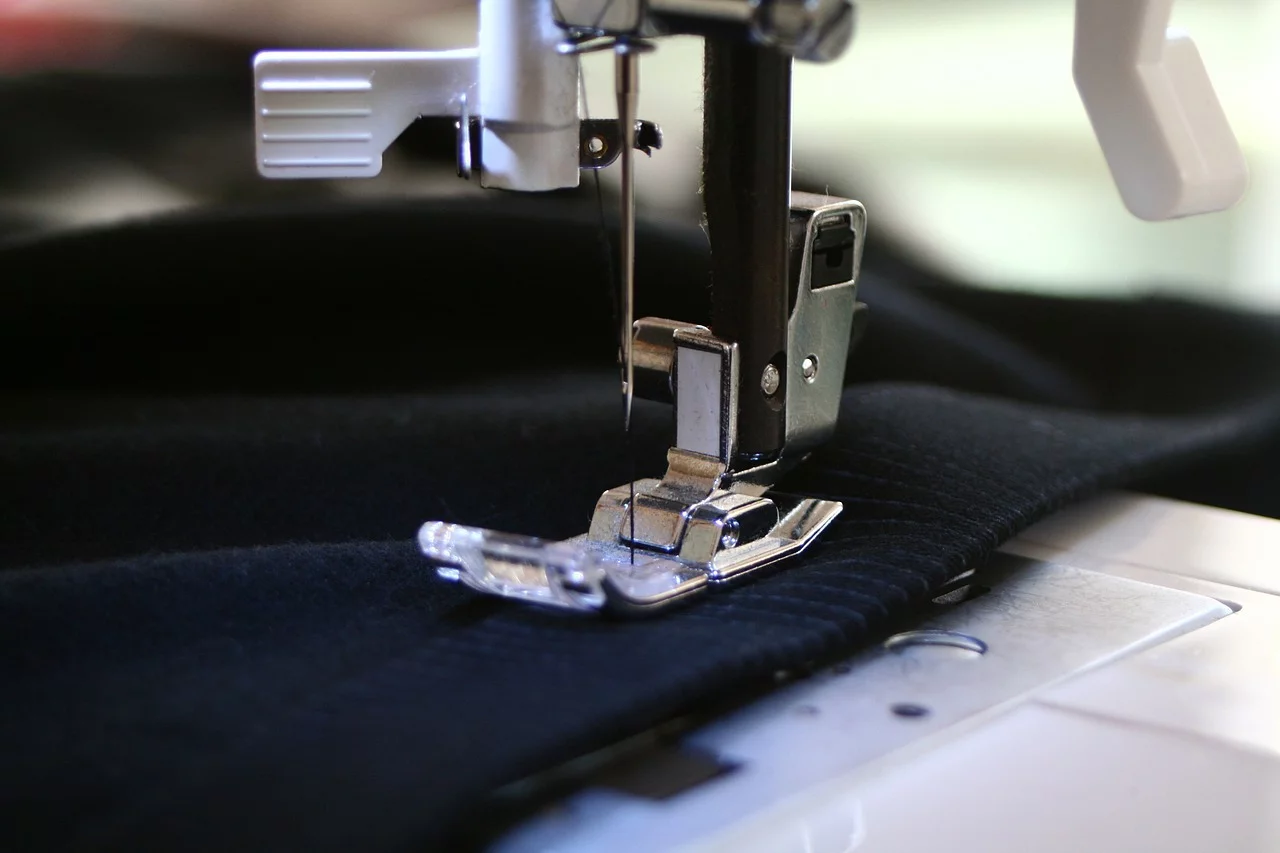
How to stitch waterproof fabrics
Otherwise: use our translation tool and translate our Dutch page into English.
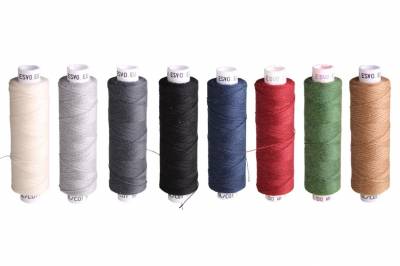
Is it possible that polyester thread can be 100% water repellant?
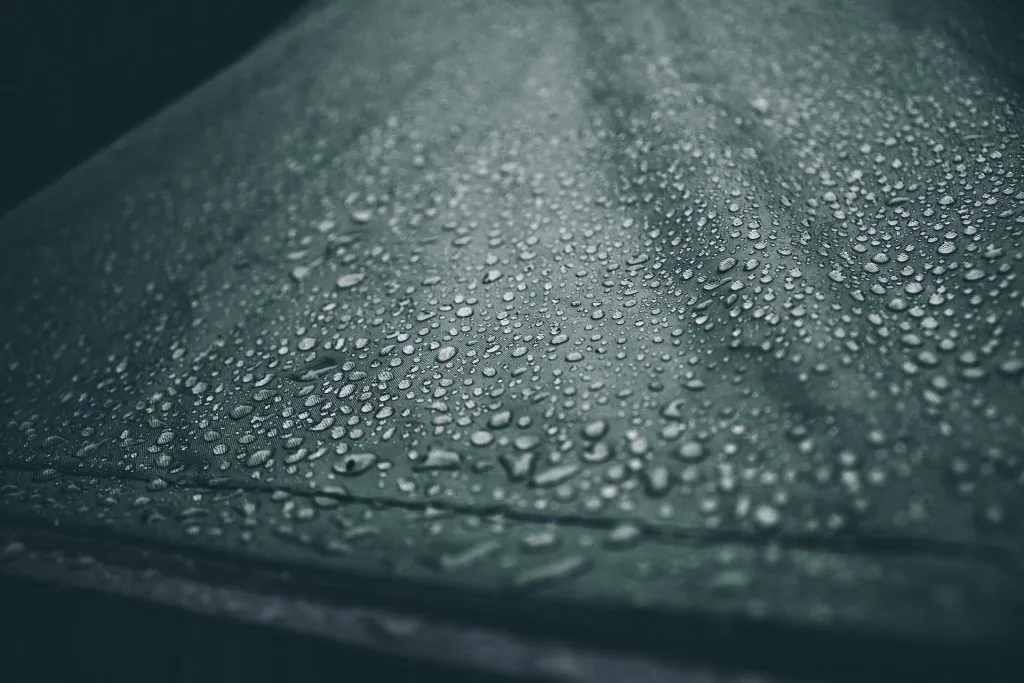
FAQ's about waterproofing a tent
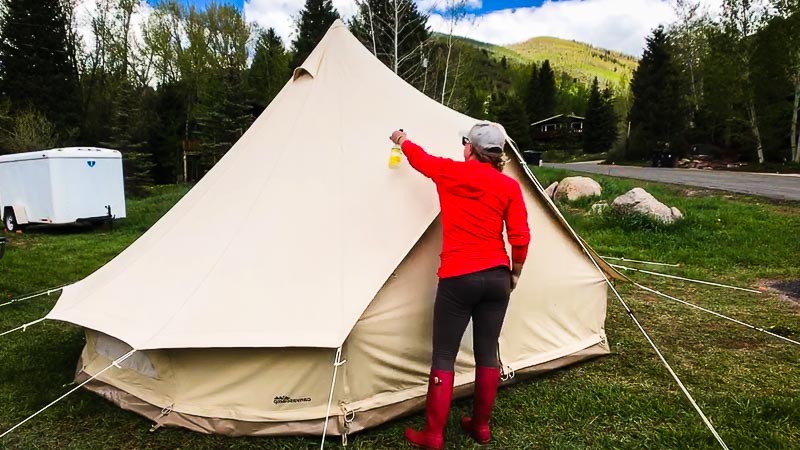
How to waterproof a tent
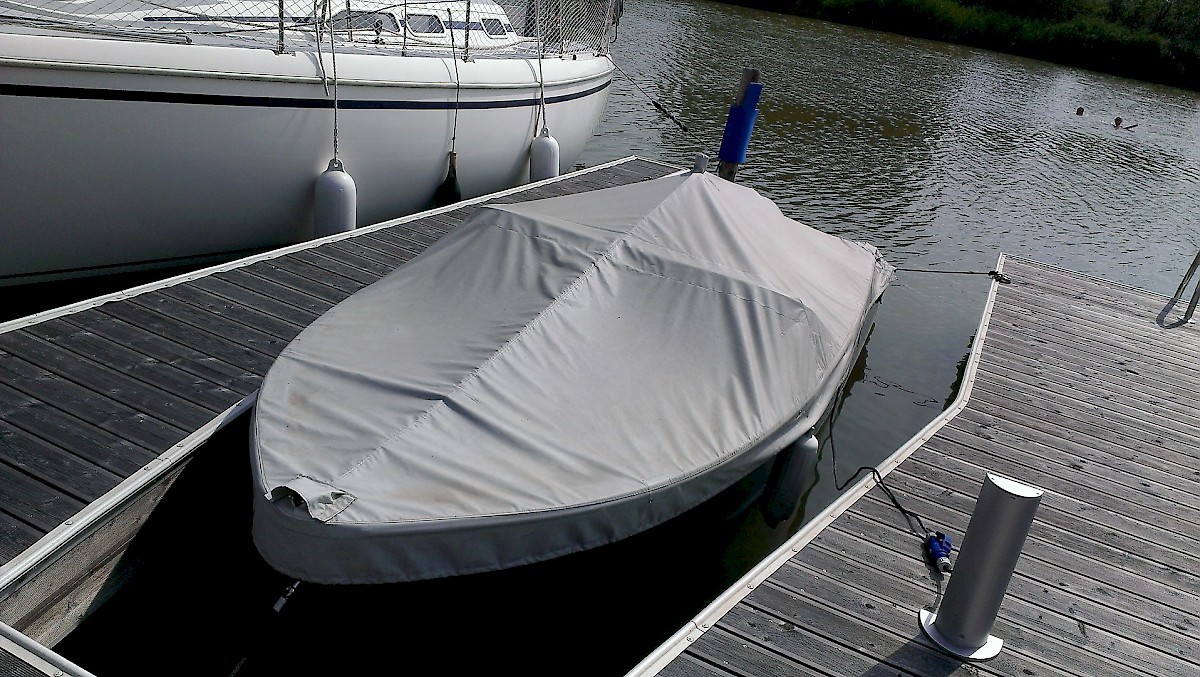
The difference between boat tarpaulin pvc and boat canvas
Boat tarpaulin from pvc or boat canvas. What is the difference?
In popular speech, there is quite a bit of confusion about the difference between boat tarpaulin out of pvc and boat canvas. As absolute specialists, we can explain it well. Is boat tarp always made of PVC? If you take the word literally, boat tarpaulin is often reinforced PVC: a polyester fabric coated underneath and on top with PVC, more popularly known as "truck hood tarpaulin" and in the industry as bisonyl. That PVC is also available uncoated(without that polyester interlayer), but then it's called pure PVC film. On the other hand, there is boat canvas: a coated canvas fabric, which is waterproof coated and dirt-resistant treated. That boat canvas has also been called boat tarpaulin in recent years because it is used for a boat cover, hood or bimini.
What is the difference between these two types of boat tarpaulin?
If you want to store a boat tarp easily and it should not be bulky, the canvas boat tarp is considerably easier than the thick PVC or the PVC film.
Furthermore, after some years the PVC can start to form a so-called craquelé: small cracks, caused by impact of U.V. radiation and weather conditions. The way of handling the PVC boat tarpaulin is also important: if the boat cover or deck is constantly or roughly crammed together, this also promotes the cracking effect.
As a heavy duty material as a PVC boat tarp, a weight of above 400 grams per m2 is advised. PVC as a boat cover can be used on two sides.
The canvas boat canvas is often seen on fancy boat covers, hoods and bimini's. It a flexible but sturdy boat fabric with unmatched waterproofing and weather resistance in terms of color fastness. Well-known brands are Sunbrella Plus by Dickson, Docril N, Sauleda, Mehler or Swela(Markilux). These brands do not differ in quality in terms of boat fabric, but do have a different "grip" and differ minimally in terms of shape stability in terms of shrinkage and processing. Ergo: all these brands are reliable in quality and simply qualify as very good.
The underside of this canvas boat fabric has a highly waterproof coating, while the outside is the most attractive side of the boat fabric.
Advantages and disadvantages in case of dirt or bird droppings: A PVC boat cover can always be easily cleaned with a wet mop.
A canvas boat cover, as mentioned, looks much fancier, but if bird droppings have moved in as acid, that stain will remain visible for quite a long time. General dirt can be brushed off with a soft brush or lukewarm, clean water. After many years, there is also cleaning fluid for this canvas boat canvas, but that in turn requires additional impregnation after that cleaning.
Is there any alternative to these 2 types of boat canvas?
Purely as a fabric for a boat cover, there is also the well-known TenCate All Season waterproof canvas. This is a 100% polyester and is windproof, weatherproof, dimensionally stable and colourfast. It is low in condensation, breathable and has an extra dirt-resistant finish. However, the most important aspect of this sailcloth is the micro-porous acrylic coating that takes care of all the above features. With regard to the aspects of dirt: because the coating is on the upper side of the All Season fabric, it can be easily removed with both a brush and lukewarm water. It is therefore not without reason that this waterproof fabric is used for caravan awnings, caravan canopies, patio covers, garden furniture covers, et cetera. Long-short: this fabric can also be used perfectly well as a boat cover.
Can you sew or process boat tarpaulin yourself?
You can cut PVC to size and process it yourself with sailmaker's glue, such as Sabaplast 70T. This way, you can wrap the PVC material as a base for eyelets or other fastening points.
The canvas boat canvas is fine to process on a household sewing machine. By the way, if you are going to do your own converting, we advise you to use the right and durable haberdashery. After all, if the sewing thread has 'perished' after one year, all your efforts will have been in vain. Sewing thread with a polyester/cotton or 100% polyester blend is the most durable. Note: if there is a light cotton component in a polyester sewing thread, it will swell when the boat fabric gets wet. This of course makes the stitching, which has perforated the fabric, more waterproof. In terms of sewing/stitching, we recommend a so-called flat cap seam. There is an excellent video on YouTube about this.
Even more information on these different types of boat cloth
Should you have further specific questions on boat cloth in terms of weight or design, please send an e-mail to us and we will expertly answer your question with specific advice. Always welcome.
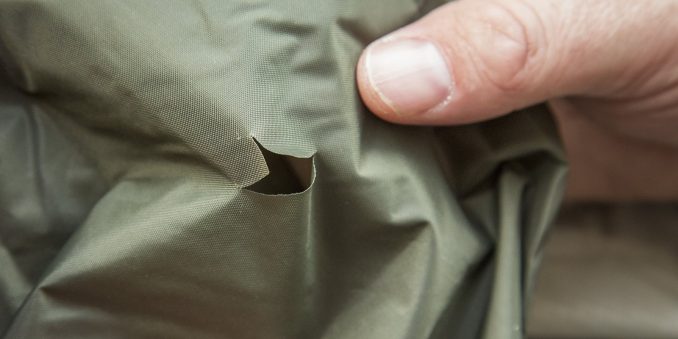
How do you repair a tear in fabric or PVC? And waterproof!
How do you repair a tear in fabric or PVC? And waterproof!
Do you have a hole or tear in your clothing, tarpaulin, tent fabric or other fabric? There are various repair products for this. Of course also waterproof repairs.
First of all, there is self-adhesive repair tape: transparent, flexible, extremely strong and yet permanent.
Advantages: transparent fabric repair with tape further prevents the tear in the canvas, fabric or PVC from running out. This type of repair has a more than excellent adhesion and can be applied at temperatures of -28 to +60 degrees. It eliminates the need for liquid glue and/or sewing. Stretches and springs back. Can easily handle tension without loosening or tearing. It also dries slowly, so you can still move the tape around.
You also have glue for repairing a hole in cloth, fabric, plastic, PVC or sailcloth.
This glue remains elastic, making it suitable for repairing waterproof wading suits, mackintoshes, tents, caravan awnings, swimming pools, backpacks, neoprene products, shoes, boots, and leather.
Assortment of kits for repairing a hole or tear in fabric, clothing or plastic
Click here for a wide range of repair kits for waterproof repair of tarpaulin, tent fabric, soft plastic, PVC and much more. Offered by the market leader in outdoor fabrics and therefore with expertise in waterproof repair of fabric.
More information on repairing a hole or tear in fabric, cloth or pvc
You are, of course, always welcome to ask specific questions. Please contact us first at [email protected] or call 0031299 363695. We will be happy to advise and assist you if you need to repair your fabric or cloth or pvc.

